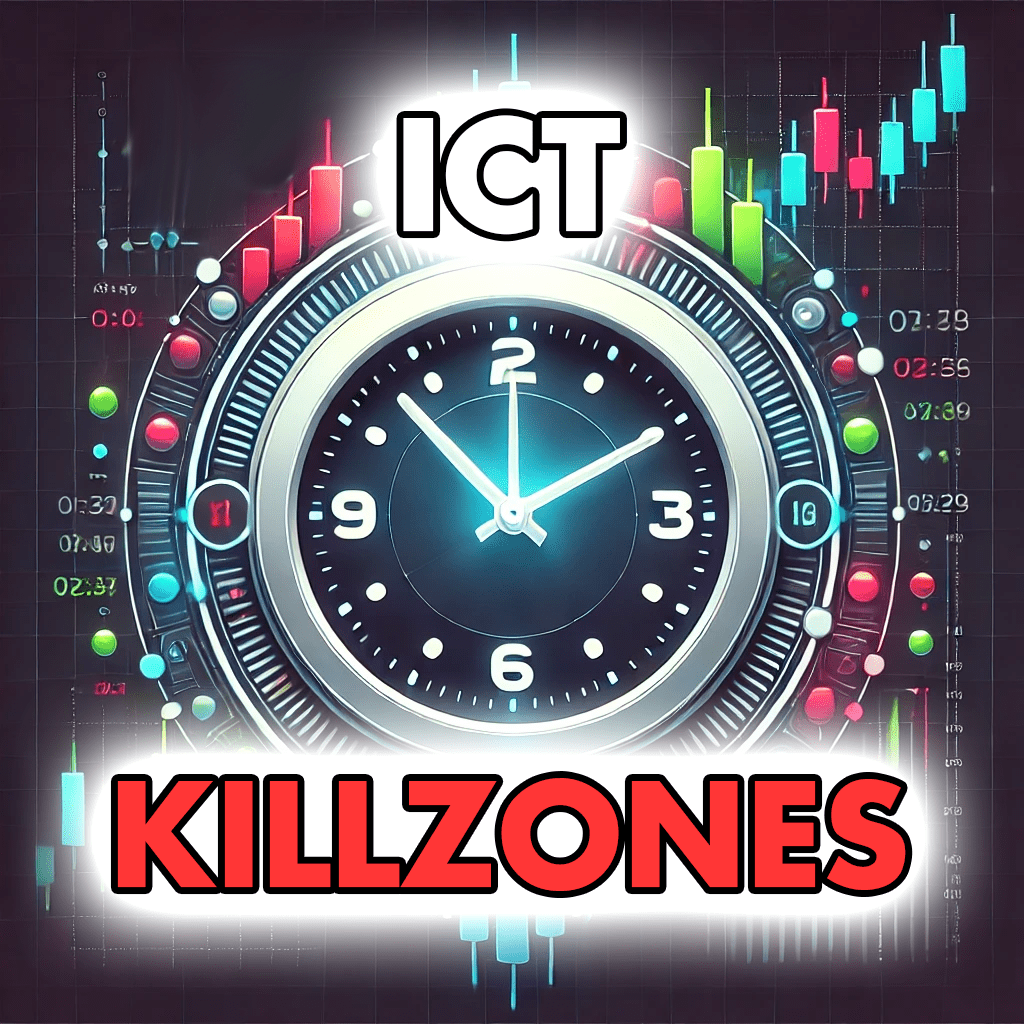ICT Killzones: Mastering Powerful Time-Based Trading for Precision Entries
Table of Contents
Toggle
What Are ICT Killzones?
ICT Killzones are specific time windows during the trading day identified by the Inner Circle Trader’s (ICT) methodology. These time periods are when the market is most likely to experience high volatility and offer optimal trading opportunities.
Unlike random trading throughout the day, ICT killzones allow traders to focus on precise timeframes where institutional traders are most active, as well as when manipulation tendencies may take place such as a fake price move and a reversal. By trading during these killzones, you can align your trades with Smart Money Concepts (SMC) and take advantage of high-probability setups that ordinary traders may not be able to capitalize on.
Why ICT Killzones Matter in Trading
ICT killzones are essential because they help traders narrow their focus to the times when the market is most active and liquid. Trading outside of these time windows often results in choppy price action and lower-quality setups.
Here’s why ICT killzones are critical for your trading success:
- Increased Volatility: Killzones coincide with market open times, creating liquidity and price movement.
- Better Trade Timing: Knowing when to expect significant moves helps you avoid wasting time on low-volume periods.
- Institutional Activity: These time periods align with when banks, hedge funds, and other institutional players are most active.
By focusing on ICT killzones, you increase your chances of entering trades during high-impact periods, anticipating the manipulation of retail traders, rather than getting caught on the wrong side of price runs.
Understanding the Main ICT Killzones
There are three main killzones in ICT trading:
1. London Killzone
The London Killzone is the most important time window for forex traders, as the London session is responsible for the largest trading volume in the forex market.
Timeframe:
- 2:00 AM to 5:00 AM EST
During this period, major European markets are opening, leading to significant liquidity and price movement. It’s common to see breakouts, retracements, and stop-hunting moves during this time. The London Judas Swing is common during this time, which is basically a fake move in a direction to draw in traders to trade in the wrong direction before a reversal. The purpose of this is to accumulate more liquidity for Smart Money.
Currencies to Focus On:
- GBP/USD
- EUR/USD
- USD/CHF
2. New York Killzone
The New York Killzone captures the overlap between the London session and the New York session, which is known for its strong price movements and reversals.
Timeframe:
- 8:00 AM to 11:00 AM EST
This is when key economic news releases occur, creating volatility in major currency pairs. The New York Killzone is particularly effective for catching retracements and continuation moves, but occasionally reversals depending on the intraweek profile.
Currencies to Focus On:
- USD pairs (especially USD/JPY and EUR/USD)
- Major stock indices like S&P 500 and Nasdaq 100
3. Asian Killzone
The Asian Killzone is typically quieter than the London and New York killzones, but it can offer early setups for traders who want to get a head start on the market.
Timeframe:
- 7:00 PM to 10:00 PM EST
This period focuses on Asian markets, particularly Japan, Australia, and New Zealand. While volatility is lower, it’s a good time to identify order blocks and liquidity pools that may be targeted in the following sessions.
Currencies to Focus On:
- AUD/USD
- NZD/USD
- USD/JPY
How to Use ICT Killzones in Your Trading
Here’s how you can integrate ICT killzones into your trading strategy:
- Identify Market Structure: Before the killzone starts, analyze the market structure to determine the overall trend.
- Mark Key Levels: Identify liquidity pools, fair value gaps, and order blocks where the price is likely to react.
- Wait for Price Action: During the killzone, watch for breakouts, retracements, or stop-hunts to align your entries.
- Confirm with Time and Price Theory: ICT emphasizes the importance of time and price. Ensure that your trades align with key time-based levels for higher probability.
- Use Risk Management: Set stop-loss and take-profit levels based on key killzone price points.
Tips for Trading ICT Killzones Effectively
- Stick to High-Impact Times: Focus on the London and New York killzones for the best trading opportunities.
- Avoid Overtrading: Only trade during the killzones to avoid choppy, low-volume periods.
- Use a Trading Plan: Have a clear trading plan that outlines your entry criteria, stop-loss, and take-profit levels.
- Watch for News Events: Keep an eye on economic calendars to avoid unexpected volatility during major announcements.
- Backtest Your Strategy: Practice your trades in a demo account to refine your entries and exits.
Conclusion: The Power of ICT Killzones
ICT killzones are a powerful tool for traders who want to improve their timing and align with institutional movements. By focusing on these time windows, you can increase your chances of capturing high-probability trades while avoiding low-quality setups.
Incorporating London, New York, and Asian killzones into your trading strategy can help you achieve more consistent results. Remember, it’s not just about what you trade but when you trade that makes all the difference.
Private Coaching
Want to know more about utilizing the power of ICT Killzones in your, book your free discovery session with me today! We’ll discuss your goals, assess your current trading strategy, and create a personalized plan to align you with the edge of trading like smart money.
